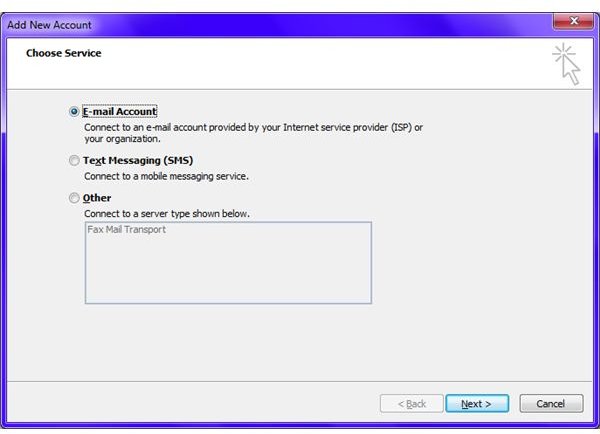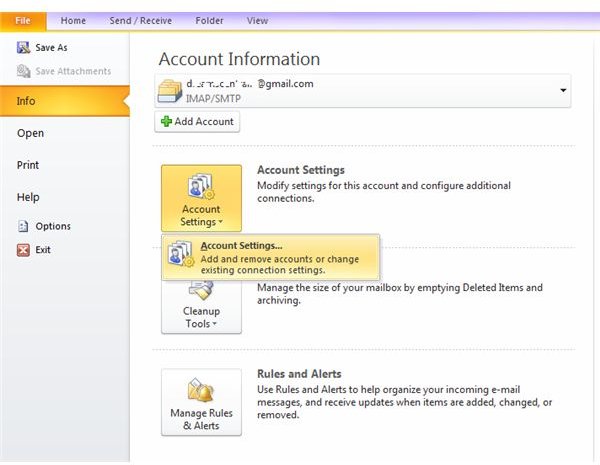Microsoft Outlook Email Setup - Tips to Install Microsoft Outlook
Microsoft Outlook E-mail Setup - Tip to Install Microsoft Outlook
Talking about Microsoft Outlook e-mail setup, let me tell you a fact that you may or may not know already. Before you install Microsoft Outlook, you might want to remove the current installation. This is because when you install Office 2007 or Office 2010 while having previous versions of Office, you get a separate installation. This means you get both the previous version and the one you install.
If you do not want two versions on your computer (which I suppose would be the case with many), remove current installation of Microsoft Office. Removing Microsoft Office uninstalls Outlook too. However, it leaves back basic data files so that later installations give you fully configured e-mail accounts as soon as you install Microsoft Outlook again - same or updated version.
With this basic dialog on how to install Microsoft Outlook, let us proceed to Microsoft Outlook e-mail setup.
Microsoft Outlook E-mail Setup - Configuring E-mail Accounts
Microsoft Outlook e-mail setup is easy in versions 2007 and 2010. As said earlier, if you install Microsoft Outlook without formatting the drive, and in the same operating system, it will automatically configure itself using the leftovers of previous installation.
If you formatted the drive or are going for Microsoft e-mail setup on a fresh operating system, you will have to configure e-mail accounts from scratch. This too is a cheese as both Office 2007 and Office 2010 can configure the e-mail accounts for you automatically when you provide them with your e-mail address and password.
Important: Before Microsoft Outlook can automatically configure e-mail accounts, you need to specify if you wish to configure a POP3 account or an IMAP account. Most e-mail service providers allow you to access your e-mail via POP3 or IMAP. You have to specify this using the website of e-mail service provider. Login into your e-mail account on the web and turn on IMAP or POP3 per your wish. If you have HTTP or Exchange account, you need not change anything on the e-mail server.
When you run Outlook for the first time, it asks if you wish to set up an e-mail account. Click Yes. For setting up additional accounts, use Account settings window. You will get similar wizard in both cases (see images below).
In Outlook 2007, click on the Tools tab and select Account Settings. In Outlook 2010, click on the File tab, select Account Settings and again Account Settings.
In the Account settings window, click New to open the New E-mail Wizard. Outlook 2007 will ask you if you wish to set up POP3, IMAP, HTTP or Exchange account. Select the one you wish. Outlook 2010 will ask you if you want to configure an e-mail account, SMS account or a FAX account. Select E-mail Account and click Next.

Type your name, e-mail address and password in the relevant fields. If you wish to manually configure the account, click Manually Configure Server Settings. Click Next.

Microsoft will automatically configure your account based on the e-mail address you provided. If you selected Manually Configure Server Settings, you will get another screen where you need to fill in your e-mail address, password, incoming server and outgoing server address.
This explains automated Microsoft Outlook e-mail setup in Outlook 2007 and Outlook 2010. Turn to next page for manual configuration of e-mail accounts for Outlook 2003 and above versions.
Tip: It is always better to keep Server Timeouts to 5 min or more for IMAP accounts so that Outlook does not fail in syncing IMAP folders. Use Account Setting window again. Select the IMAP e-mail account and click Change. In the resulting window, click More Settings. Increase server timeouts on the Advanced tab.
Microsoft Outlook E-mail Setup - Manual Configuration

After you install Microsoft Outlook 2003, you need to perform a manual configuration for all the e-mail accounts that you want to add to the Outlook. Sometimes, Outlook 2007 and Outlook 2010 are not able to setup e-mail accounts automatically, especially if you are trying to set up an e-mail account related to your website.
After you install Microsoft Outlook, you need to know the following for setting up e-mail accounts manually:
- The incoming mail server address
- The outgoing mail server address and
- Whether the e-mail account needs a secure connection
For e-mail accounts related to websites, the most common settings would be pop.secureserver.net for incoming mail server address and smtpout.secureserver.net for outgoing mail server address. And they won’t normally require a secure connection. These settings should work for most of the old websites. They may not work for some newer websites. If they do not work, you will have to contact your hosting provider to receive incoming mail server address and outgoing mail server address.
Though Outlook 2007 and Outlook 2010 should be able to automatically set up e-mails related to other popular e-mail services such as Google Mail, Hotmail, Yahoo, etc, sometimes they may fail. In this case, or if you are using Outlook 2003, you need to get the information about these incoming and outgoing mail server addresses. You can check out this information on the Settings page by logging into your e-mail using a browser. If the information is not available, you can try out the following formats:
POP3 Accounts: pop.e-mail_service_provider for incoming mail server and smtp.e-mail_service_provider for outgoing mail server.
IMAP Accounts: imap.e-mail_service_provider for incoming mail server and smtp.e-mail_service_provider for outgoing mail server.
For example, if you are using Gmail, the settings would be:
pop.gmail.com for incoming mail server and smtp.gmail.com for outgoing mail server if you want to setup POP3 account.
imap.gmail.com for incoming mail server and smtp.gmail.com for outgoing mail server while setting up an IMAP account.
In case these formats too don’t work, contact the e-mail service provider to know the settings so that you can install Microsoft Outlook and perform Microsoft Outlook e-mail setup.
Related Reading
Use Outlook Connector and View Hotmail in Office 2010
Using Outlook 2010 to Receive Yahoo Email
Configuring Gmail Settings for Outlook
References
Screenshots from Microsoft Outlook 2010
Microsoft Knowledgebase, Document ID: 287532
This post is part of the series: Outlook Tips and Tricks - Part III
Continuing further, this series on Microsoft Outlook offers five more tips on dealing with the e-mail client and its components. It covers Outlook PST repair, Saving Outlook e-mails as HTML to disk, Spam Blocking, Email setup and Transferring Outlook to new computer.
